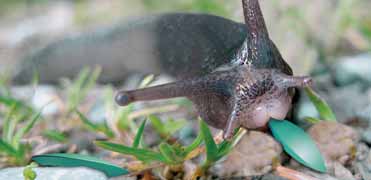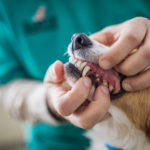After a long, wet and very cold winter we are thrilled that Spring has arrived. But Spring also brings about some hazards and one in particular is the presence of snail (and slug) bait in the garden..

Part of the problem is that snail bait pellets can look just like dog kibble, so dogs often eat the pellets by mistake. Unfortunately even the so called “pet friendly” products can be dangerous if ingested, so if you are unsure please check with us first.
There are three types of snail bait:
- Metaldehyde – green pellets
- Methiocarb – blue pellets
- Iron EDTA (Multiguard) – brown/yellow pellets
The most dangerous are Metaldehyde and Methiocarb. They act on the nervous system causing increased stimulation and can be fatal if immediate veterinary treatment is not given.
Multiguard is less toxic but can cause gastrointestinal issues such as vomiting and diarrhoea, or may cause damage to the liver, spleen, heart, kidneys or brain. If this is ingested, we still recommend treatment.
Be careful if you happen to visit the neighbour’s garden or a friend’s garden as you might not realise it has been laid.
Signs of snail bait poisoning:
- – Muscle tremors and restlessness
- Excessive drooling
- – Rapid heart rate & panting
- – Vomiting & diarrhoea
- – Seizures
If your pet has ingested (or even if you just think your pet might have ingested) snail bait, please don’t hesitate to call us for emergency advice immediately.
BEE AND WASP STINGS
It is rare but some dogs and cats are severely allergic to bee stings. These pets may go into anaphylactic shock (and even die) if they don’t receive immediate veterinary attention. Vaccines and emergency adrenaline pens are available for severely allergic pets.

Here are three tips to help prevent bee stings this coming spring / summer…
– Try to keep your pet away from flowering trees and plants (especially ground cover).
– Discourage your pet from playing with or chasing bees
– Be aware that rotting fallen fruit, meat and uneaten pet food are attractive to European wasps.
What should you do if your pet is stung by a bee or a wasp?
In most cases, there will be mild swelling and tenderness at the sting site. You should try remove the tiny stinger as quickly as possible to stop the venom spreading (although they can be hard to see). If you cannot see the sting or aren’t confident in removing it, apply a cold compress (damp towel) to reduce swelling and call us to book an appointment.
Treatment for a sting
Symptoms of a sting include
– Your pet licking the area constantly
– Whimpering in pain
– Limping (most common when stung on the paw)
– Swelling of the area ( common places for stings include nose, face, ears and paws)
– Lethargy
When does my pet need urgent emergency care?
Seek veterinary advice immediately if your pet:
– Is having trouble breathing
– Is vomiting within 5-10 minutes of being stung
– Has pale gums
– Collapses






